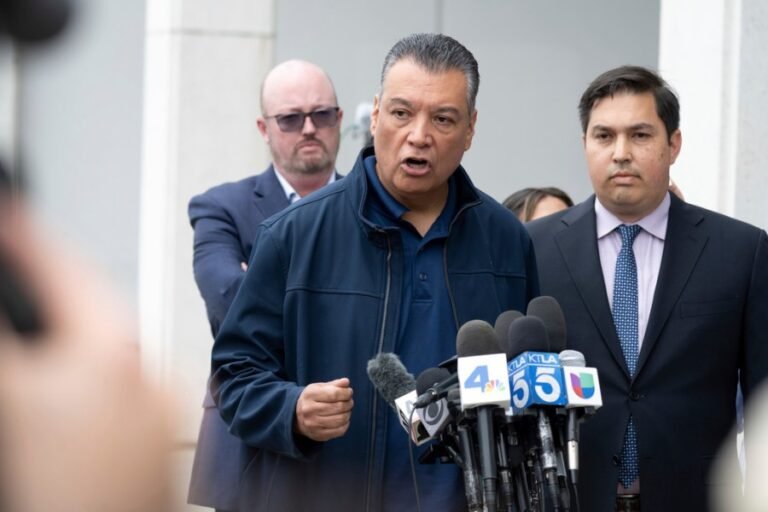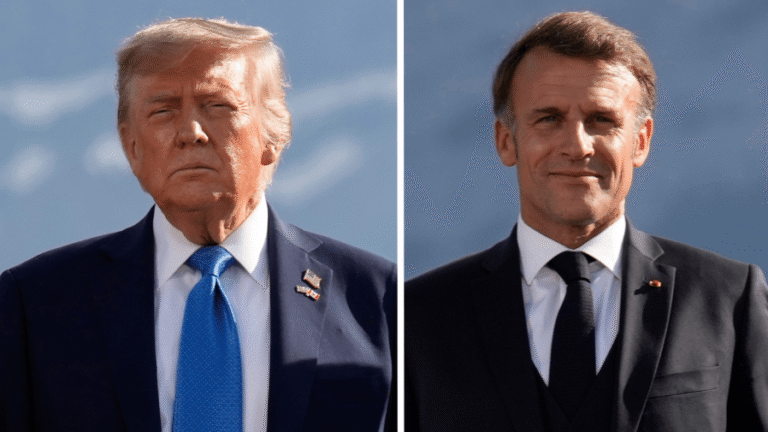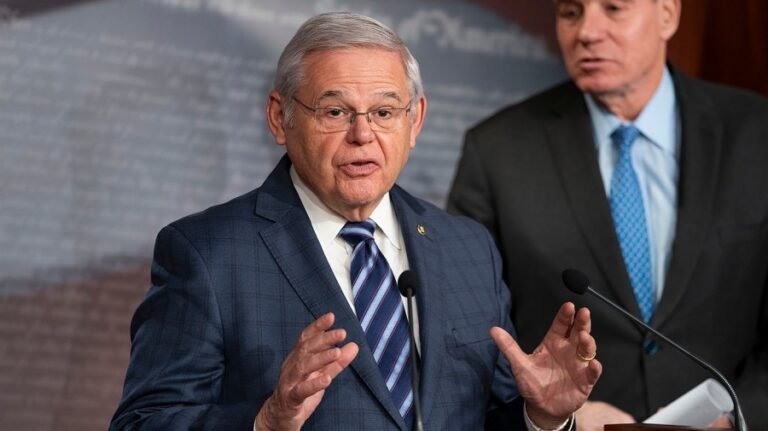Optics are telling us all we need to know about Team Trump’s ill-advised approach to negotiating with Russian President Vladimir Putin. Just as the Russian dictator entered the room to meet with Steve Witkoff for a third time, President Trump’s special envoy was observed placing his right hand over his heart.
It was a pathetic display of endearment to the Russian dictator and indicted war criminal. The Kremlin also interpreted Witkoff’s obsequious display as a green light.
Within 24 hours, the same smug and emboldened Putin would authorize a Palm Sunday ballistic missile attack against the Ukrainian city of Sumy. Two Iskander-variant ballistic missiles packed with cluster munitions struck the city center, killing 34 civilians and injuring 117. Fifteen of Putin’s victims were children. The response from the U.S.? More performative excuses and condolences, but no tangible solutions.
Trump told reporters Sunday evening, “I think it was terrible, and I was told they made a mistake, but I think it’s a horrible thing.”
It was not a mistake. It was deliberate murder. Simple pattern analysis shows Putin’s intent: target and kill Ukrainian civilians. Thoughts and prayers will not stop the killing. Yet that is all Team Trump offered Ukraine in the aftermath of the Russian attack.
Secretary of State Marco Rubio posted on X, “The U.S. extends our deepest condolences to the victims of today’s horrifying Russian missile attack on Sumy.” Special Envoy retired U.S. Lt. Gen. Keith Kellogg added the attack “crosses any line of decency.”
Kellogg said something similar on Dec. 25, denouncing a Russian attack on Kharkiv, “Christmas should be a time of peace, yet Ukraine was brutally attacked on Christmas Day. Launching large-scale missile and drone attacks on the day of the Lord’s birth is wrong.”
Former U.S. Ambassador to Ukraine Bridget Brink submitted her resignation last week after once again expressing her condolences after a Russian ballistic missile attack armed with a cluster warhead struck Kryvyi Rih on Apr. 4, wounding 72 and killing 20, including nine children.
Condolences cannot stop ballistic missiles or drones.
As we warned last week, “Russia does not want peace — at least not peace as the West envisions it. For Putin, peace is accomplished when Ukraine stops resisting. His intended end-state is the complete annihilation of Ukraine, its people, and its culture.”
Palm Sunday’s attack on Sumy is further proof. Need more? Last Thursday, a video surfaced showing Russian soldiers killing four Ukrainian prisoners of war in the village of Piatykhatky.
For Putin, war crimes are simply means to an end. Meanwhile, his ground assaults continue, heedless of the human cost to his own army. Russia suffered another 3,770 casualties over the weekend.
So much for “bring[ing] about an end to this war” and “wanting the shooting to stop, the warfare to stop, the dying and the suffering to stop.” Trump says says he wants peace, but all he is getting from Putin’s Kremlin is the “never-ending dialogue” he had sought to avoid.
Rubio told us on Apr. 4 that we “would know soon enough, in a matter of weeks, not months” whether “Russia is serious about peace or not.” We have the answer: It is not.
The Kremlin’s slow roll continues. Dmitry Peskov said on Sunday that ongoing U.S.-Russian negotiations are unlikely to result in “lightning-fast results,” adding that “everything is moving very well” regarding discussions about the war in Ukraine, but that there will “likely not be immediate results.” Yet while we wait, Russia is building combat power to continue and widen its attacks along the 600-mile battlefront.
Putin’s war is also increasingly becoming global. U.S. Navy Adm. Samuel Paparo, Commander of U.S. Indo-Pacific Command, recently testified before the Senate Armed Services Committee that North Korea is sending “thousands, maybe hundreds of thousands of artillery shells and hundreds of short-range missiles to Russia.”
Reports that Pyongyang has deployed an additional 3,000 troops to Russia along with 170-millimeter Koksan guns indicate no willingness to stop the killing — only to continue the attacks.
The Trump administration must stop engaging in “endless negotiations about negotiations” and get to the business of stopping the killing of innocent Ukrainian civilians.
That begins with air defense. Ukraine needs additional assets to defend against ballistic missile and drone attacks, and the establishment of a no-fly zone similar to the one proposed by European leaders in March: Sky Shield.
During an interview with CBS News yesterday, Ukrainian President Volodymyr Zelensky said he is ready to purchase ten Patriot air defense systems for $15 billion to shield densely populated cities from ongoing Russian missile and drone attacks.
But as we have stated repeatedly, shooting individual missiles and drones from the sky does not defeat a weapons system. That requires going on offense. Ukraine also needs the ability to target weapons systems and their associated support network from wherever the Kremlin launches its ordnance.
Ukraine also needs precision deep strike weapons to interdict the flow of Russian, North Korean and Iranian weapons, ammunition and troops into Ukraine.
On Sunday, incoming German chancellor Friedrich Merz announced that Germany was willing to send its Taurus long-range missiles to Ukraine “if it were done in conjunction with allies … This must be jointly agreed. And if it’s agreed, then Germany should take part.”
The shooting, the dying, and the suffering in Ukraine will stop only when Russia’s ability to attack is militarily stopped or blunted. Neither Witkoff’s kowtowing nor continued appeasement will stop the growing number of Ukrainian civilian deaths.
Cross our hearts. It really is that simple.
Col. (Ret.) Jonathan Sweet served 30 years as an Army intelligence officer. Mark Toth writes on national security and foreign policy.


